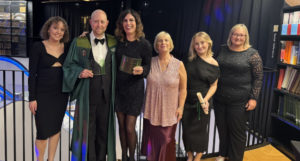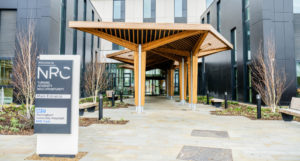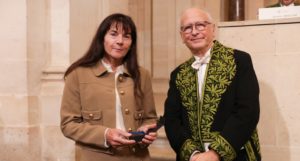New study to show how diverse multicultural views about the body, mind and soul have influenced hospital design

The British Academy project, Building for Holistic Healthcare, is awarded to Dr Sara Honarmand Ebrahimi through the International Fellowship scheme and is sponsored by Professor Maziyar Ghiabi
A new study will show how diverse multicultural views about the body, mind and soul have influenced hospital design.
Those behind the research hope the new insight into the history of medical buildings will help promote better holistic healthcare design in the future.
The British Academy project, Building for Holistic Healthcare, is awarded to Dr Sara Honarmand Ebrahimi through the International Fellowship scheme and is sponsored by Professor Maziyar Ghiabi, from the University of Exeter.
It will provide new insights into the continuous popularity into the 20th century of Victorian ideas in hospital design, challenge popular assumptions concerning fresh air, sunlight, and miasma theory, and complicates existing understandings of the meaning of “humanisation” in hospital design history.
Dr Honarmand Ebrahimi will examine case studies from the 1860s and the 1970s, including the Royal Herbert Hospital (Woolwich), the Princess Margaret Hospital (Swindon), the Iranian Hospital (Dubai), the Aga Khan Hospital (Nairobi), and the Aga Khan Hospital (Karachi).
She will consult archives in Exeter, London, Chippenham, Karachi, Dubai, Nairobi, and digitally online for architectural drawings, photographs, private letters, administrative documents, speeches, published articles, and reports.
She will also examine how ideas from Iran and the Ismaili global community influenced healthcare design.
She will examine Britain’s leading role in the 19th- and 20th- century transformation of ideas concerning hospital design. This includes Florence Nightingale’s assistance in designing of the Royal Herbert Hospital (Woolwich 1866) famously popularised fresh air and sunlight as internationally desirable ideals until the 1930s.
Dr Honarmand Ebrahimi will analyse the impact of Iran-led healthcare projects abroad in the 1970s when Mohammed Reza Shah Pahlavi introduced hospital programmes in the United Arab Emirates (Dubai 1970s) and Lebanon (Beirut 1970s).
She will also look at hospital buildings provided by the Nizari Ismaili community in Kenya (Nairobi 1950s) and Pakistan (Karachi 1970s).
Iranian and Ismaili community provision became entangled with British post-war activities, capitalist and philanthropic non-profit models from the US, and socialist and anti-imperialist models from Eastern Europe. But there was still the influence of Ismaili-Sufi formulation of the health of the self (nafs) as a seeking after union with the “ultimate Self” (Allāh) and ultimate happiness (saā֫da), as well as certain constitutions of the “subtle body” (latạ̄’if) vis-à-vis the material body (jism), pneuma (ruh tābī’ī), and substance (jawhar) within Arabic-Urdu-Persian language traditions.
Dr Honarmand Ebrahimi said: “The project will lead to new analytical tools to better understand built-environment determinants of health and the relationship between people and their surroundings more broadly. This will equip medical and architectural historians to develop a deeper understanding of holistic healthcare design and, by extension, what is termed the “hospital of the future”.



